Diagnostic Value of Fluorescence Methods, Visual Inspection and Photographic Visual Examination in Initial Caries Lesion: A Systematic Review and Meta-Analysis
- PMID: 33800937
- PMCID: PMC8000741
- DOI: 10.3390/dj9030030
Diagnostic Value of Fluorescence Methods, Visual Inspection and Photographic Visual Examination in Initial Caries Lesion: A Systematic Review and Meta-Analysis
Abstract
This systematic review and meta-analysis aimed to investigate the efficacy of fluorescence-based methods, visual inspections, and photographic visual examinations in initial caries detection. A literature search was undertaken in the PubMed and Cochrane databases. Preferred Reporting Items for Systematic Review and Meta-Analyses (PRISMA) guidelines were followed, and eligible articles published from 1 January 2009 to 30 October 2019 were included if they met the following criteria: they (1) assessed the accuracy of methods of detecting initial tooth caries lesions on occlusal, proximal, or smooth surfaces in both primary and permanent teeth (in clinical); (2) used a reference standard; (3) reported data regarding the sample size, prevalence of initial tooth caries, and accuracy of the methods. Data collection and extraction, quality assessment, and data analysis were conducted according to Cochrane standards Quality Assessment of Diagnostic Accuracy Studies-2. Statistical analyses were performed using Review Manager 5.3 and STATA 14.0. A total of 12 eligible articles were included in the meta-analysis. The results showed that the sensitivity and specificity of fluorescence-based methods were 80% and 80%, respectively; visual inspection was measured at 80% and 75%, respectively; photographic visual examination was measured at 67% and 79%, respectively. We found that the visual method and the fluorescence method were reliable for laboratory use to detect early-stage caries with equivalent accuracy.
Keywords: fluorescence; initial tooth caries; photographic visual examination; visual inspection.
Conflict of interest statement
The authors declare no conflict of interest.
Figures



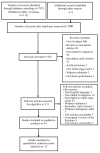
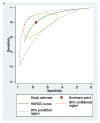
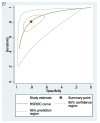
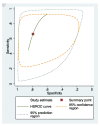
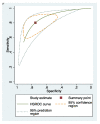

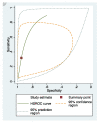

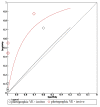
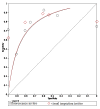


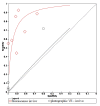
Similar articles
-
Can we trust visual methods alone for detecting caries in teeth?Evid Based Dent. 2016 Jun;17(2):41-2. doi: 10.1038/sj.ebd.6401165. Evid Based Dent. 2016. PMID: 27339234
-
Efficiency of Near-Infrared Technology in the Clinical Detection of Carious Lesions: A Systematic Review.Eur J Dent. 2024 Feb;18(1):14-25. doi: 10.1055/s-0043-1761187. Epub 2023 Mar 4. Eur J Dent. 2024. PMID: 36870328 Free PMC article.
-
Clinical performance of fluorescence-based methods for detection of occlusal caries lesions in primary teeth.Braz Oral Res. 2017 Nov 6;31:e91. doi: 10.1590/1807-3107BOR-2017.vol31.0091. Braz Oral Res. 2017. PMID: 29116301
-
The effect of resin infiltration on proximal caries lesions in primary and permanent teeth. A systematic review and meta-analysis of clinical trials.J Dent. 2018 Oct;77:8-17. doi: 10.1016/j.jdent.2018.08.004. Epub 2018 Aug 6. J Dent. 2018. PMID: 30092238
-
Dental caries in primary and permanent teeth in children's worldwide, 1995 to 2019: a systematic review and meta-analysis.Head Face Med. 2020 Oct 6;16(1):22. doi: 10.1186/s13005-020-00237-z. Head Face Med. 2020. PMID: 33023617 Free PMC article.
Cited by
-
Ozone Treatment for the Management of Caries in Primary Dentition: A Systematic Review of Clinical Studies.Dent J (Basel). 2024 Mar 6;12(3):69. doi: 10.3390/dj12030069. Dent J (Basel). 2024. PMID: 38534293 Free PMC article. Review.
-
DIAGNOdent versus International Caries Detection and Assessment System in detection of incipient carious lesions: A diagnostic accuracy study.J Conserv Dent. 2023 Mar-Apr;26(2):199-206. doi: 10.4103/jcd.jcd_575_22. Epub 2023 Mar 16. J Conserv Dent. 2023. PMID: 37205891 Free PMC article.
-
Development of a Visualisation Approach for Analysing Incipient and Clinically Unrecorded Enamel Fissure Caries Using Laser-Induced Contrast Imaging, MicroRaman Spectroscopy and Biomimetic Composites: A Pilot Study.J Imaging. 2022 May 13;8(5):137. doi: 10.3390/jimaging8050137. J Imaging. 2022. PMID: 35621901 Free PMC article.
-
Detecting white spot lesions on post-orthodontic oral photographs using deep learning based on the YOLOv5x algorithm: a pilot study.BMC Oral Health. 2024 Apr 24;24(1):490. doi: 10.1186/s12903-024-04262-1. BMC Oral Health. 2024. PMID: 38658959 Free PMC article.
-
Evaluation of the remineralization potential of self-assembling peptide P11-4 with fluoride compared to fluoride varnish in the management of incipient carious lesions: a randomized controlled clinical trial.Clin Oral Investig. 2024 Jul 22;28(8):438. doi: 10.1007/s00784-024-05822-z. Clin Oral Investig. 2024. PMID: 39037455 Free PMC article. Clinical Trial.
References
-
- Young D.A., Nový B.B., Zeller G.G., Hale R., Hart T.C., Truelove E.L. The American Dental Association Caries Classification System for clinical practice: A report of the American Dental Association Council on Scientific Affairs. J. Am. Dent. Assoc. 2015;146:79–86. doi: 10.1016/j.adaj.2014.11.018. - DOI - PubMed
-
- Makhija S.K., Gilbert G.H., Funkhouser E., Bader J.D., Gordan V.V., Rindal D.B., Qvist V., Nørrisgaard P. Twenty-month follow-up of occlusal caries lesions deemed questionable at baseline: Findings from the National Dental Practice-Based Research Network. J. Am. Dent. Assoc. 2014;145:1112–1118. doi: 10.14219/jada.2014.82. - DOI - PMC - PubMed
Publication types
LinkOut - more resources
Full Text Sources
Other Literature Sources
Miscellaneous

